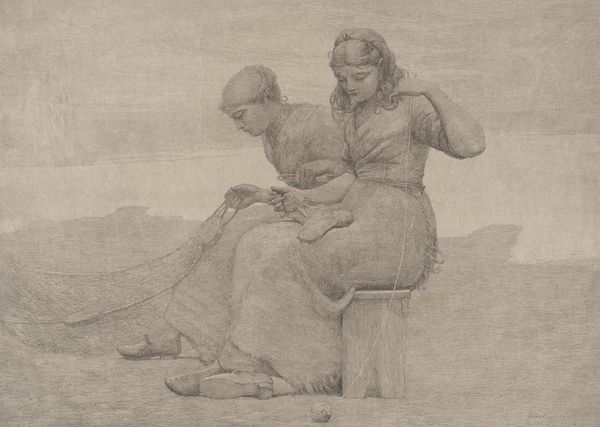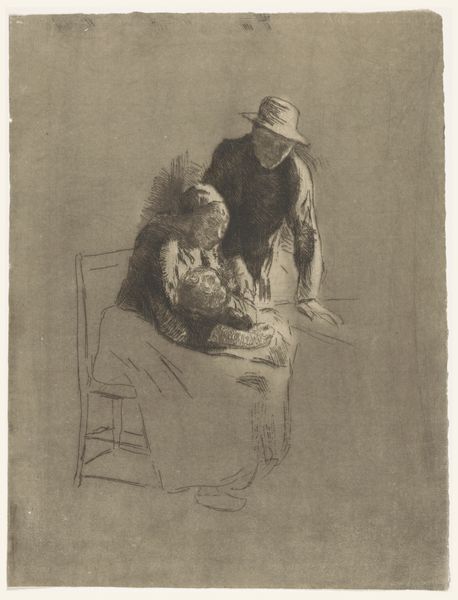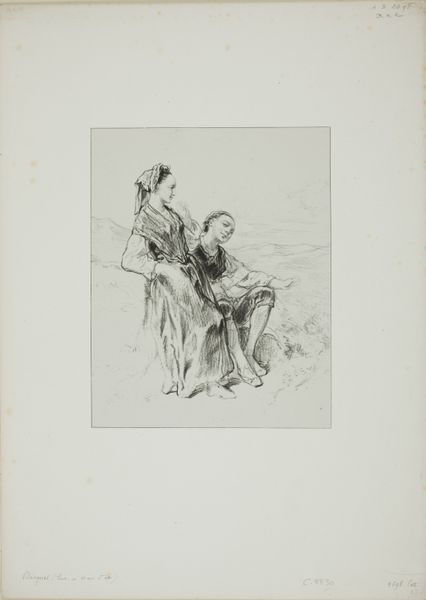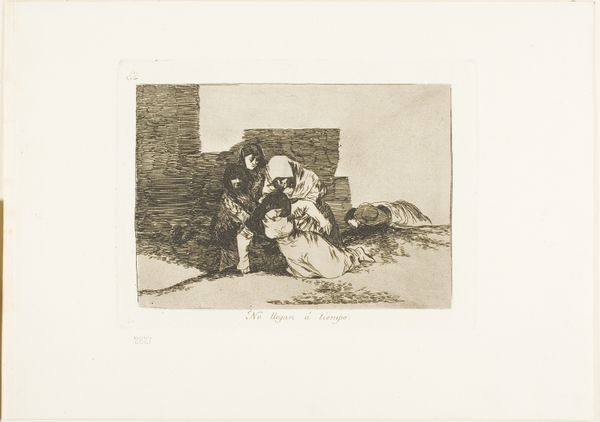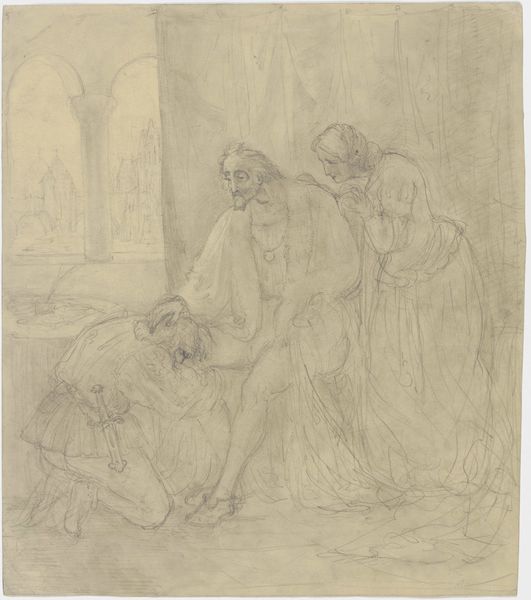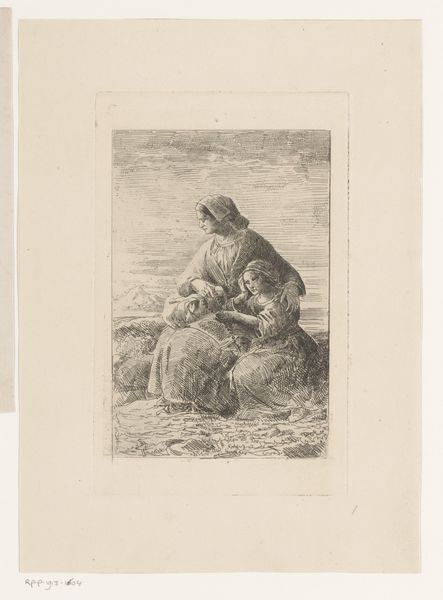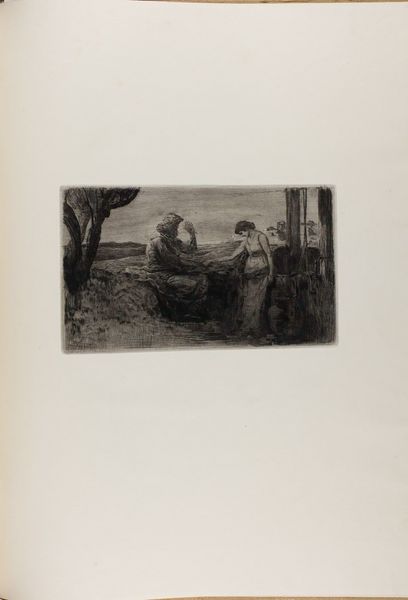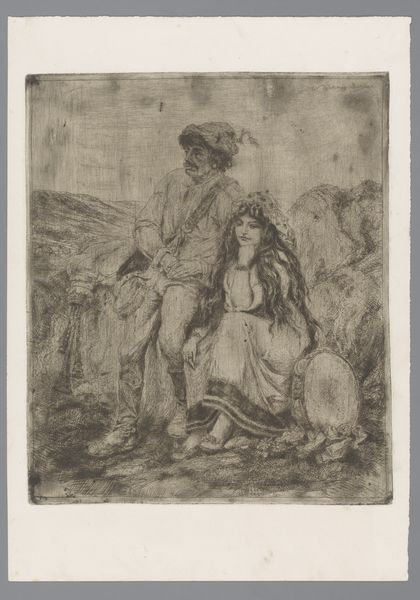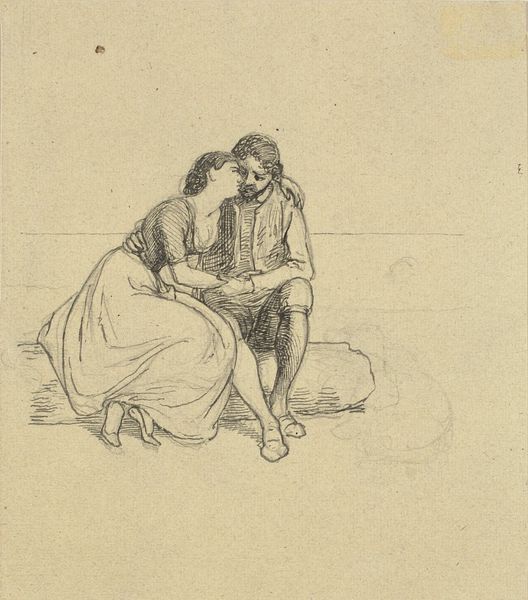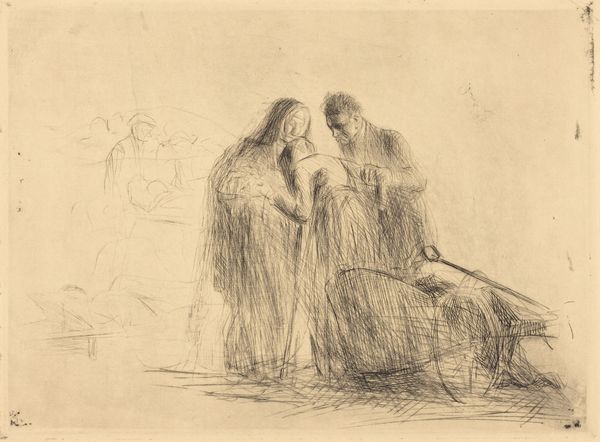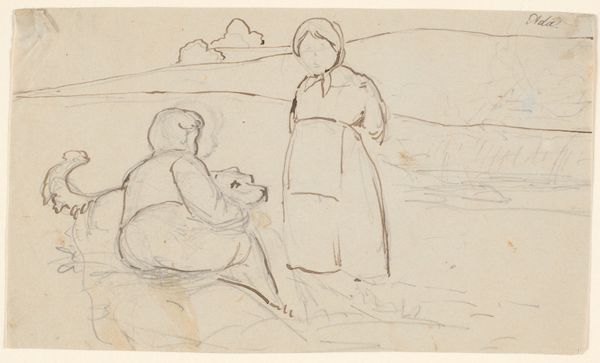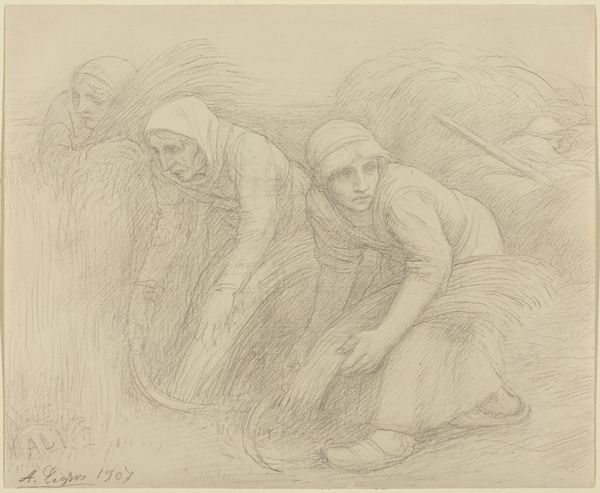
drawing, print, paper, engraving
#
pencil drawn
#
drawing
# print
#
landscape
#
paper
#
pencil drawing
#
men
#
genre-painting
#
engraving
#
realism
Dimensions: plate: 17 3/8 x 22 15/16 in. (44.1 x 58.3 cm) sheet: 21 x 27 11/16 in. (53.4 x 70.4 cm)
Copyright: Public Domain
Curator: This is Winslow Homer’s "Mending the Tears," created in 1888. It's a print, specifically an engraving, rendered in delicate pencil on paper, and it’s currently held in the collection of the Metropolitan Museum of Art. Editor: The somber grey immediately grabs you. The light is flat, and it's all surface and texture, particularly the rough clothes and coarse nets, the handwork involved just leaps out. Curator: It speaks to the crucial, often invisible, labor performed by women within maritime communities. Think about their economic vulnerability, their dependence on the sea's bounty and the safety of their loved ones who are out on the water, day in, day out. Editor: Precisely. Mending nets is physical work, a direct interaction with the material world, making things that can catch other materials. The tools, the posture – it’s about process, not just about making something beautiful to look at. The means and act of production. Curator: There’s a certain melancholy, certainly, but it is imbued with a sense of quiet strength and resilience. These women are actively repairing, mending not just nets, perhaps, but the social fabric strained by the hardships of their existence. Look at their downcast expressions! Editor: Downcast, yes, but also very focused on the immediate, tactile task. The sea may be looming as an abstract background force but their immediate task is present, the work with materials—string, twine, clothing… all tangible. The small ball on the ground looks like something discarded or maybe an implement about to be put into use, the suggestion that time continues onward through use and repair, never truly still, Curator: Do you see this piece in dialogue with Homer's other marine paintings? These portrayals tend to romanticize fishermen braving tempestuous seas but these sorts of depictions frequently obscure these less sensational stories from domestic spaces, women, as silent supports propping up the fishing community as a whole. Editor: Absolutely, seeing the means and materials here reminds one of the less romanticized economic ecosystem required by those more outwardly 'heroic' images. And for its time, to render them in this manner is certainly remarkable; what is seen can truly become known! Curator: Indeed, seeing this art provides some means and ways for social reckoning. Editor: Definitely, thinking about the women’s work also gives one pause to reflect on our current patterns of labor, material consumption and modes of visibility…
Comments
No comments
Be the first to comment and join the conversation on the ultimate creative platform.
